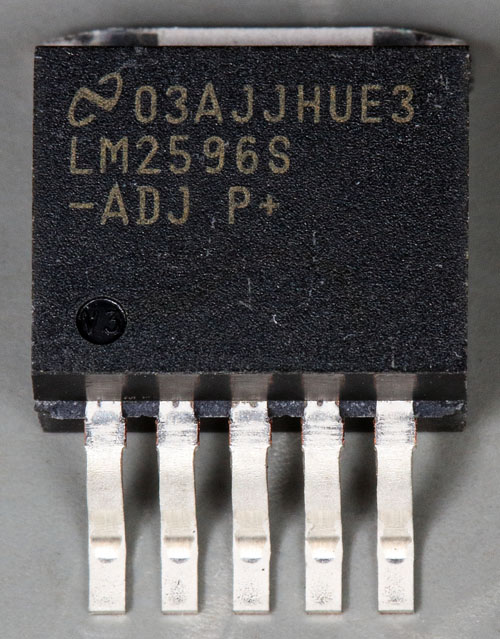
LM2596-ADJ built by National Semiconductor: Step-Down, 1,2V-37V, 3A, 150kHz
Also available with fixed outputs: 3,3V, 5V, 12V
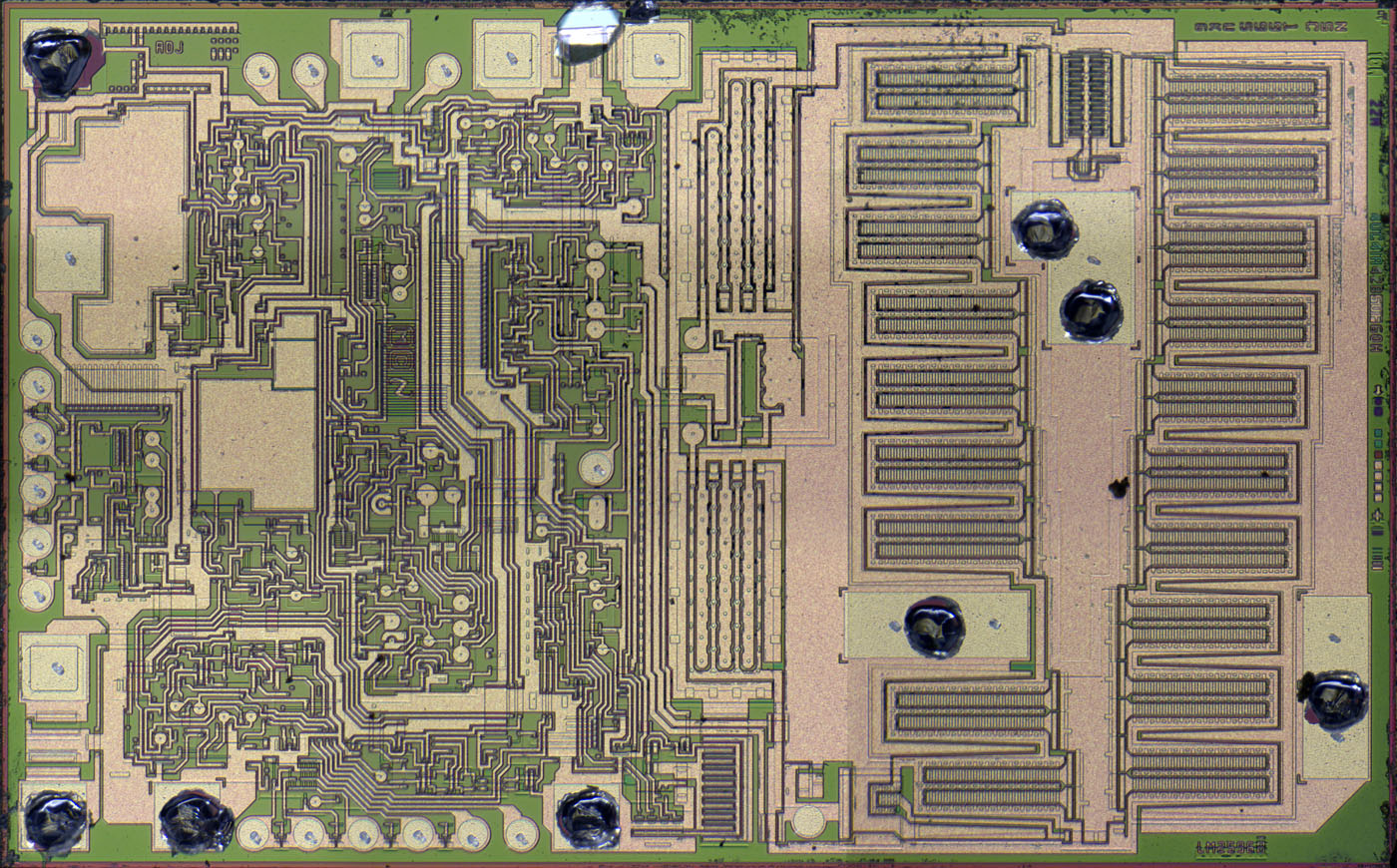
The die is 4,0mm x 2,5mm.
There are a lot of testpads. You also can find four pads that are bigger than the bondpads that were used in this package. Interesting...

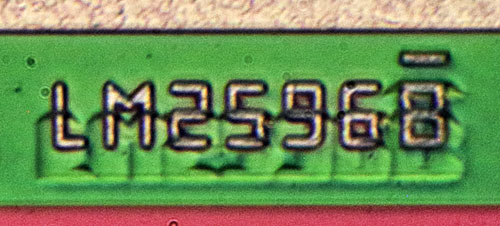
LM2596B
Perhaps B stands for a second revision or it´s the metal layer for the ADJ-regulator.

It´s a 1995 design.

Seven masks, some of them were modified seven times. But perhaps the different output voltages caused some revisions.
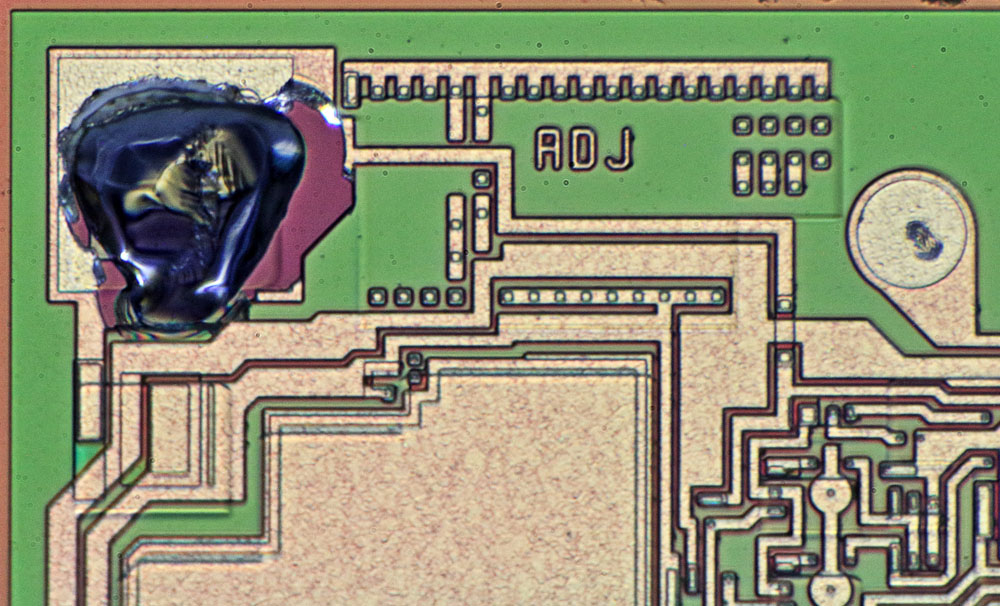
National Semiconductor highlighted the area in which the resistor divider for the voltage feedback is placed with a ADJ. You can see the different contacts of the resistors. In the ADJ-variant no resistor is connected and the potential of the bondpad is routed directly into the regulator.
Unfortunatelly you can´t see the resistors in this die.

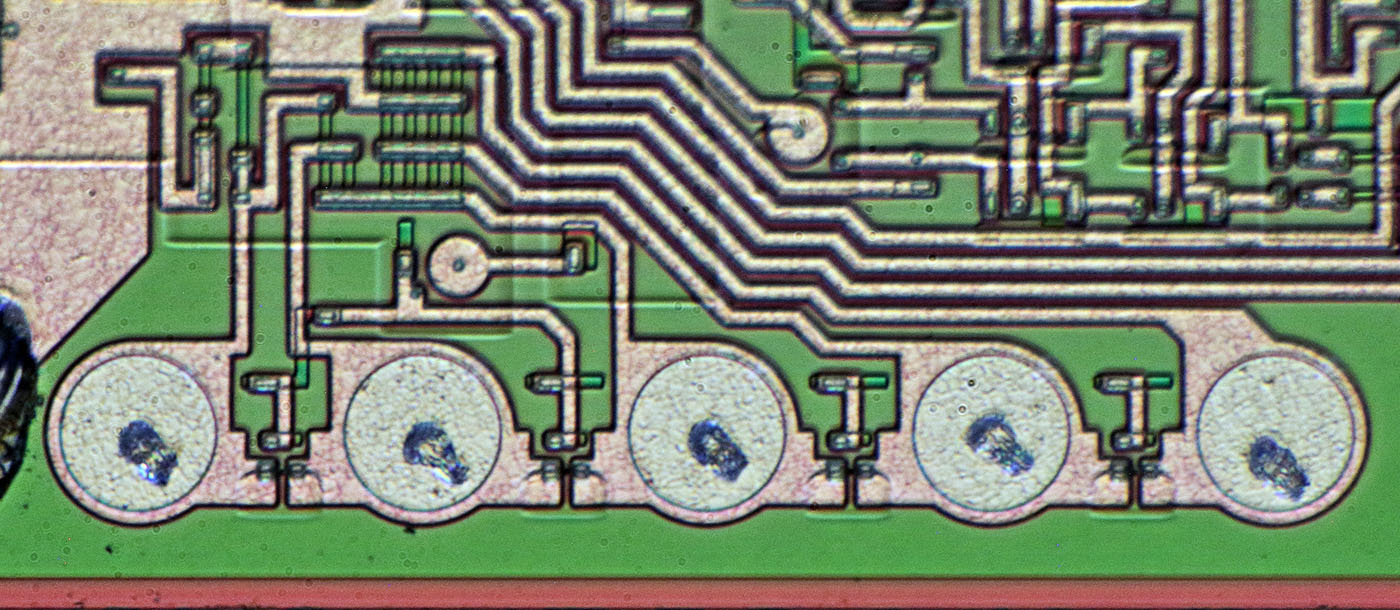
That are interesting fusable links! It has to be polysilicon or zener fuse but what does the additional contact above the fuse do?

Probably the fuses adjust the reference.
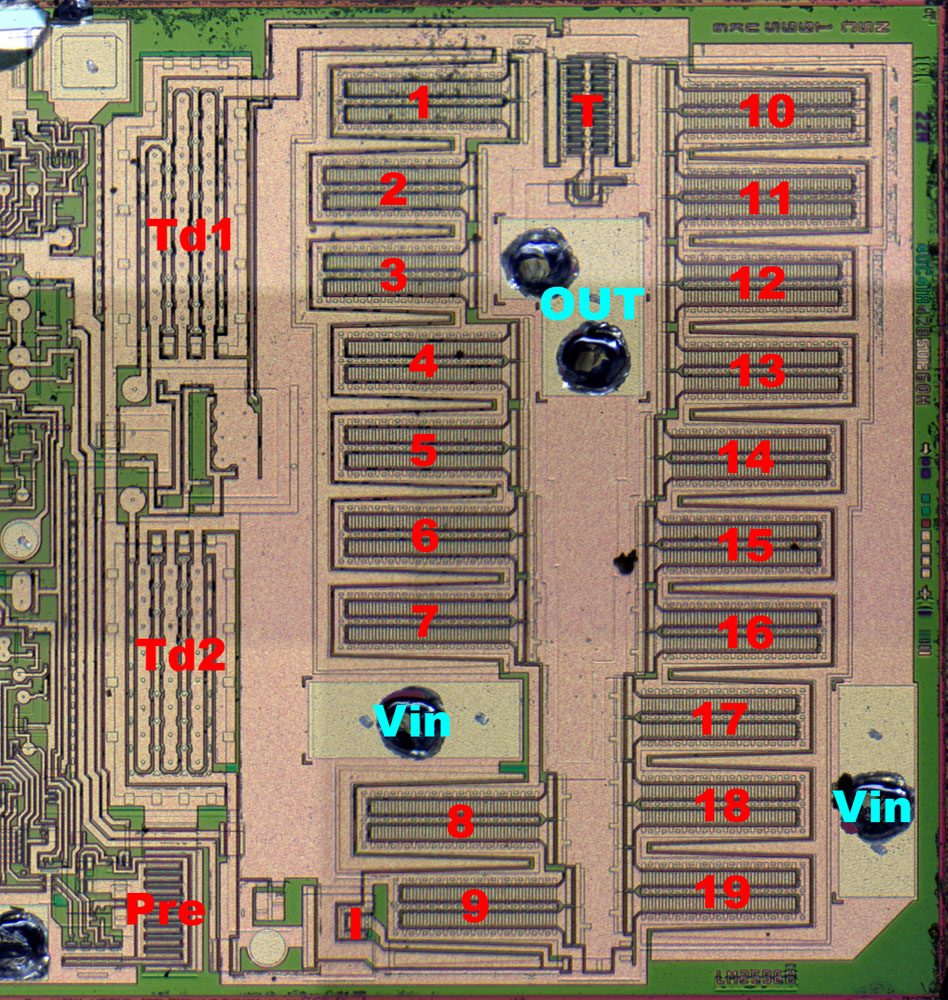
The output stage is a sziklai-transistor with 19 power transistors and two driver PNPs (Td1/Td2).
There is also a small transistor (I) which is used for current sensing.
"Pre" is the driver of the sziklai-transistor.
"T" has to be the temperature sensing element for overtemperature protection.
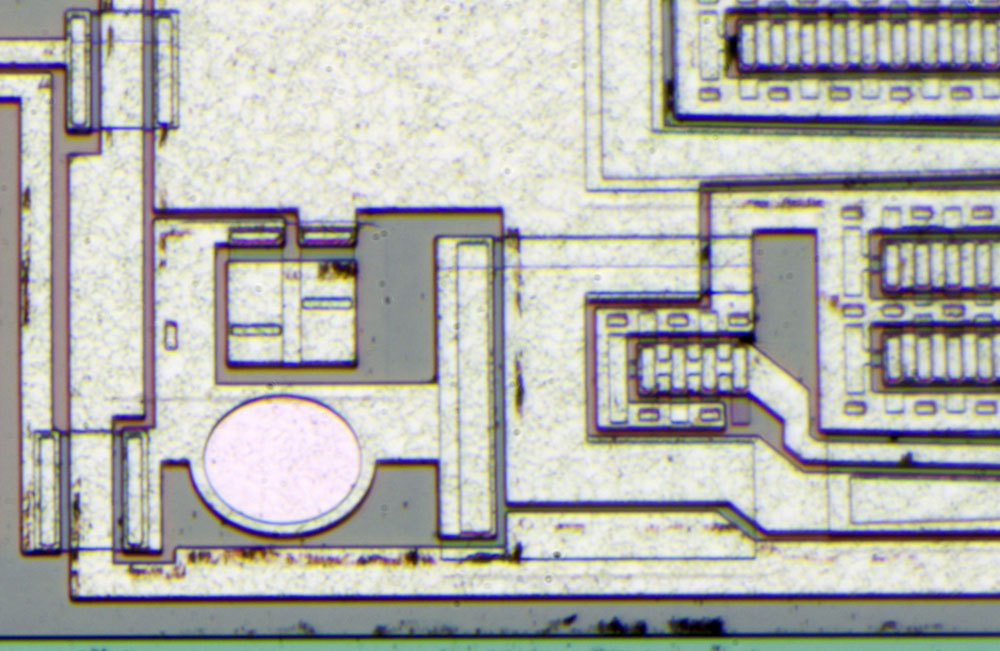
On top of the shunt resistor is a metal square with two slim vias. By moving this vias National was able to adjust the overcurrent threshold.
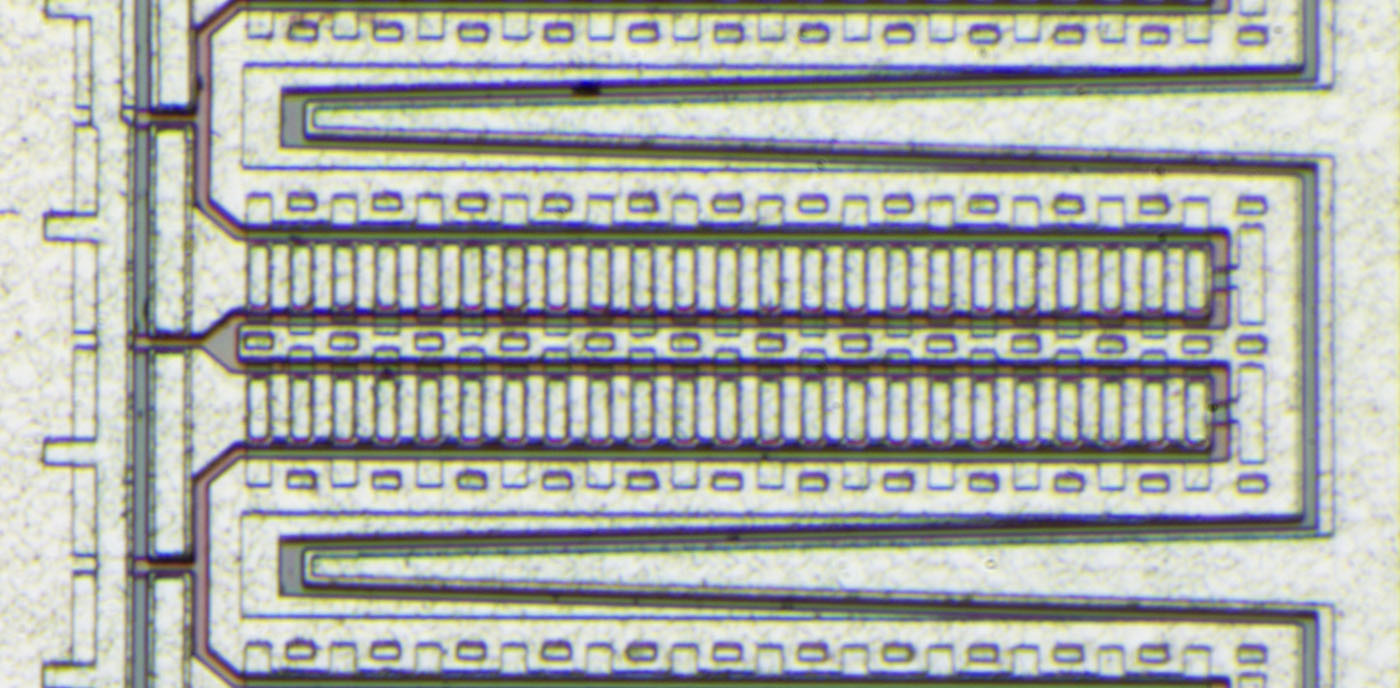
Big transistor...

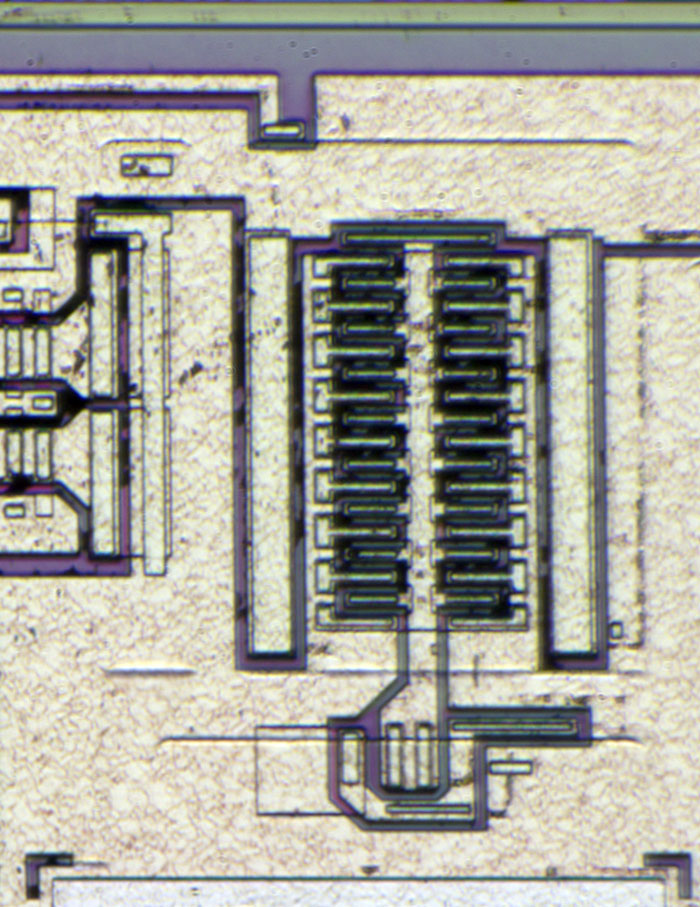
I´m not sure but this has to be the overtemperature protection. It seems like the transistor is able to drain the base current of the output transistor.
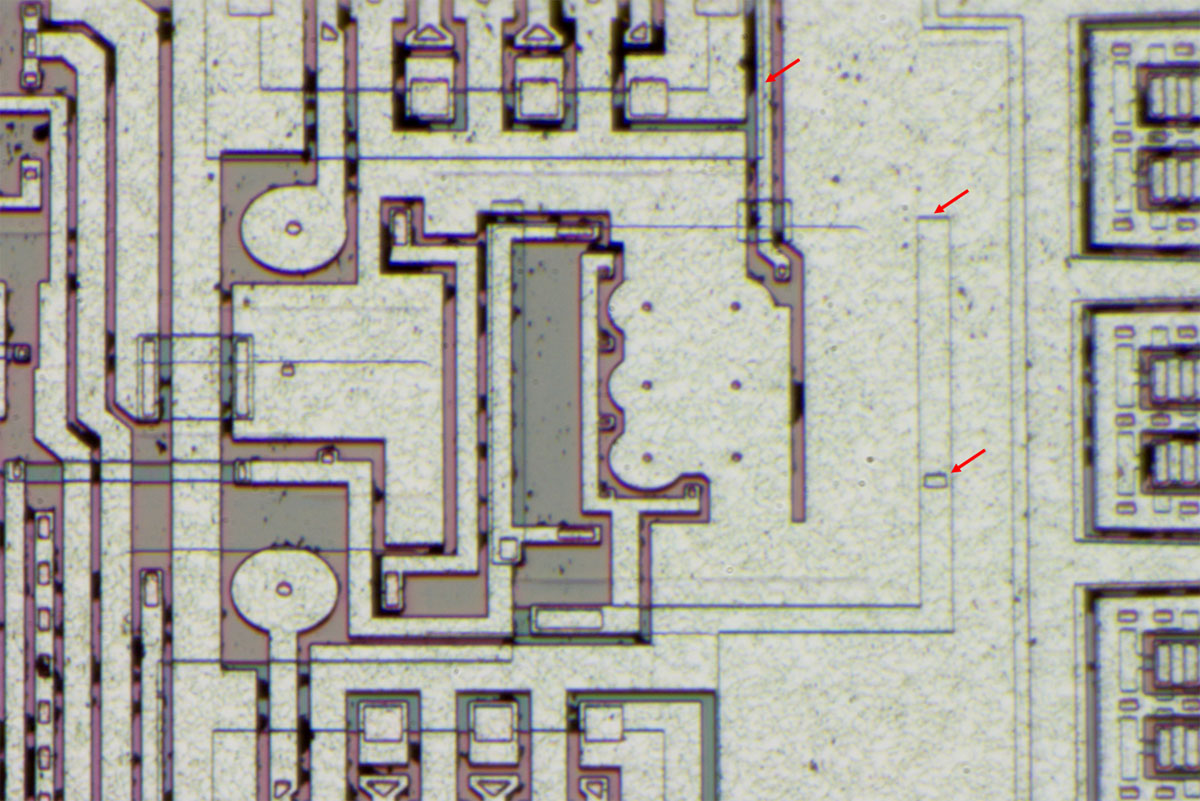
There is one line connecting the "T-area" with a six-PNP-area between the sziklai-drivers.
I´m pretty sure the long resistor connected with one small via gives you the possibility to adjust the overtemperature threshold.
Datasheet: "Self protection features include a two stage frequency reducing current limit for the output switch and an over temperature shutdown for complete protection under fault conditions."
Why reducing the frequency? That sounds not very logical to me.

Some more pictures:
https://www.richis-lab.de/voltageregulator07.htm 